Technical Newsletter
Issue 34
Global Stability Analysis Saves the Day
Some conditions that greatly influence global stability are poor soil conditions, steep slopes, and excessive water. The Ridge at Broomfield development looked to be building a retaining wall under just such conditions. The site called for a large slope above and below the wall. To make matters worse, the onsite soils were poor.
In order to ensure the site retaining walls were properly designed, a local professional engineer was hired. Steve Kelley of SK Wall Design was employed to engineer a site solution. Steve worked in coordination with a local Allan Block (AB) Master Wall Builder, Slaton Brothers, in order to be certain that all site walls were built in accordance with all of his design specifications. Some of the initial concerns were as follows:
- Some of the worst sections of retaining wall had four to one slopes above them extending a great distance behind which had to be accounted for.
- These same sections of retaining wall also had four to one slopes at their toe extending out 40 ft (12 m). This combined slope caused great concern from a global stability perspective.
- Geotechnical analysis of the site soils revealed a friction angle of 22 degrees. This further compounded global stability concerns.
- Initial excavation efforts exposed ground water in a number of locations. This required a great deal of water management design and construction.
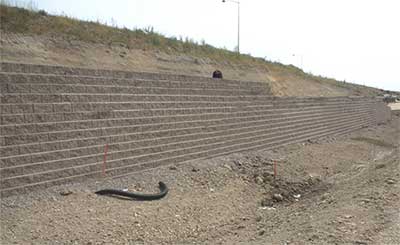
After performing all of the required engineering analysis, it was determined that the AB Classic block from Allan Block proved to be the perfect option for the retaining walls on site. The flexibility of the Allan Block system allowed the engineer to lengthen geogrid, bury additional block, enlarged the reinforced foundation, and add drainage features to solve all the site issues. Blanket and chimney drains were incorporated during the construction process by Slaton Brothers’ crew to ensure the reinforced mass remained dry and geogrid reinforcement was added to the retaining wall foundation for added base stability.
The Ridge at Broomfield is a testament to just how versatile the Allan Block retaining wall system can be. The walls were expertly engineered by SK Wall Design in accordance with Allan Block’s Best Practices document. Using the AB Walls design software, they were able to quickly generate meticulous details for the construction of the site walls. Slaton Brothers veteran crew were able to utilize their Allan Block training and years of wall building experience to overcome the hazards of this treacherous site to build walls that will stand the test of time.
Global Stability Analysis
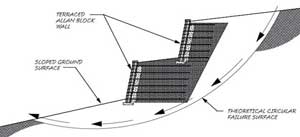
Global stability is defined as the ability of a system to withstand great disturbances without being greatly affected. How does this definition apply to segmental retaining wall (SRW) design? Typically when global stability is referred to regarding site development, developers are referring to the stability of a hillside. Adding weight such as a building or retaining wall to a hillside can introduce a great disturbance to the hillside. This load may lead to the hillside redistributing its weight via a slip surface within the hillside. Whenever a load is applied to a hillside it is always a good idea to examine the global stability of that hillside using some form of Global Stability Analysis (GSA) software to determine whether or not the system has been or will be greatly affected.
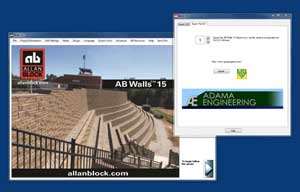
There are a number of software applications commercially available for performing global stability analysis calculations. Although the AB Walls Design Software does not perform global stability analysis, the software does allow designers to export cross sections directly into the ReSSA global stability analysis program. With a few simple clicks, designers can quickly create a file for any of their designed cross sections. This can save designers hours of time modeling their design in a GSA software application.
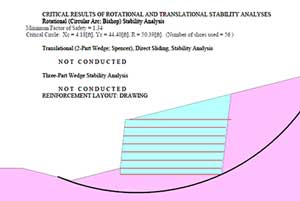
AB Walls performs a similar analysis to GSA called internal compound stability (ICS). ICS examines slip surfaces using a modified Bishop’s method of slices similarly to a number of global stability analysis software applications. However, ICS does not examine slip surfaces that pass beneath the bottom course of block or slip surfaces that extend beyond twice the retaining wall’s height behind the wall. Hence the need for a global stability analysis software. Using all these methods of design analysis will allow the designer to save days of work in their wall design and have confidence knowing that there would not be future concerns with the walls’ stability.
Water Management with Exposed Ground Water
Often times when excavation reveals ground water it becomes necessary to incorporate a French drain prior to building any structures. A French drain must be constructed and ground water must be given a chance to evacuate in order for segmental retaining wall foundations to be properly constructed.
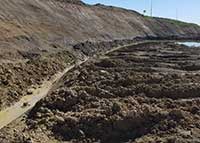
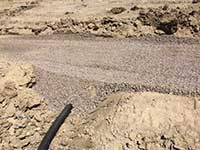
Strengthened Foundations

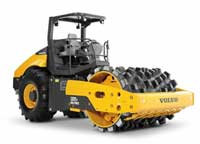
When building tall segmental retaining walls above clay soils (especially those with slopes or surcharges above them) it is often necessary to increase the size of the wall’s foundation in order to increase its bearing capacity. Oversizing the wall’s foundation in not a new technique, but it can aid in overcoming multiple site concerns.
Sometimes increasing the area of the foundation alone will not suffice to increase the bearing capacity for the loads applied in which case it may be necessary to add geogrid reinforcement, as well. Adding geogrid reinforcement to the foundation helps to distribute the vertical load throughout the structural fill material within the foundation and increases its bearing capacity.
However these strengthened foundations will not be successful if the contractor does not used the right tools for the job. If clay soils are native to the site, a sheep’s foot roller can be used to compact the ground beneath the foundation. Sheep’s foot rollers excel in compacting fine-grained materials due to its lugged design.
Overcoming Global Concerns
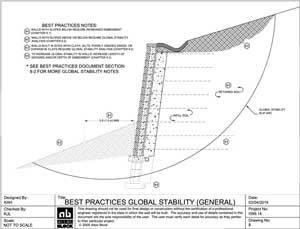
When a wall is analyzed using GSA software and the software reveals global stability concerns, it often becomes necessary to either lengthen geogrid used in the wall, or tighten up geogrid spacing to 8 in. lifts (200 mm) from 16 in. lifts (400 mm) near the bottom of the wall, or do both. Such was the case with The Ridge at Broomfield. The site conditions demanded nearly 170% geogrid lengths to achieve stability.
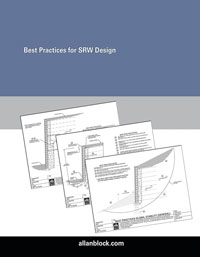
Whenever a slope is present at the toe of the wall, it is recommended that designers bury enough courses of block to ensure a five to 7 ft (1.5 – 2.1 m) horizontal table to daylight is present in front of the wall in addition to the 1 in (25 mm) of buried block per 1 ft (30 cm) of height that is already required. This practice reduces the likelihood of slip surfaces passing beneath the wall’s footing during GSA.
Chapter 9 of Allan Block’s Best Practices document discusses in greater detail strategies for both design and construction of retaining walls when global stability is a concern on site.
AB Walls Online Training Series - Earn CEU’S
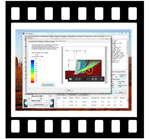
Allan Block has created an online training series for Engineers. This series begins with basic and advanced tutorials on the AB Walls Design Software. Engineers now have the ability to register and sign in to watch individual videos within the training series.
Like all Allan Block training modules, the online training series complies with the IACET requirements and allows AB Corporate to award CEU's. In order to request a credit hour for online training, you must first complete individual assessments upon watching each video.



